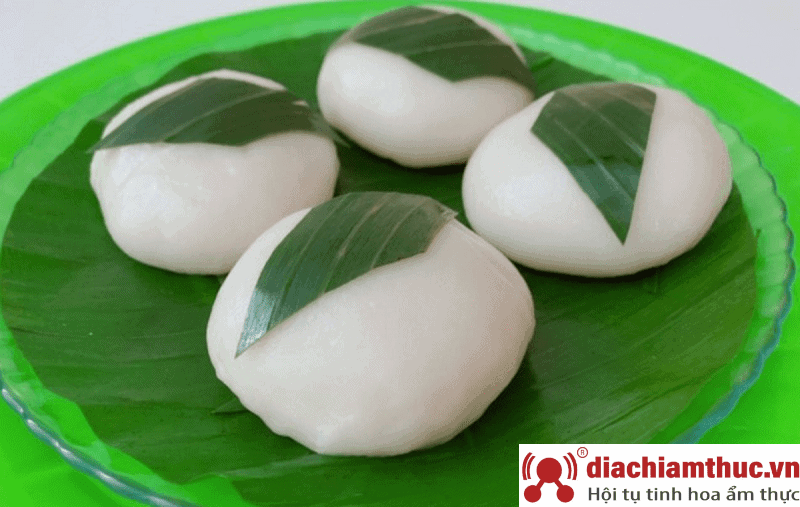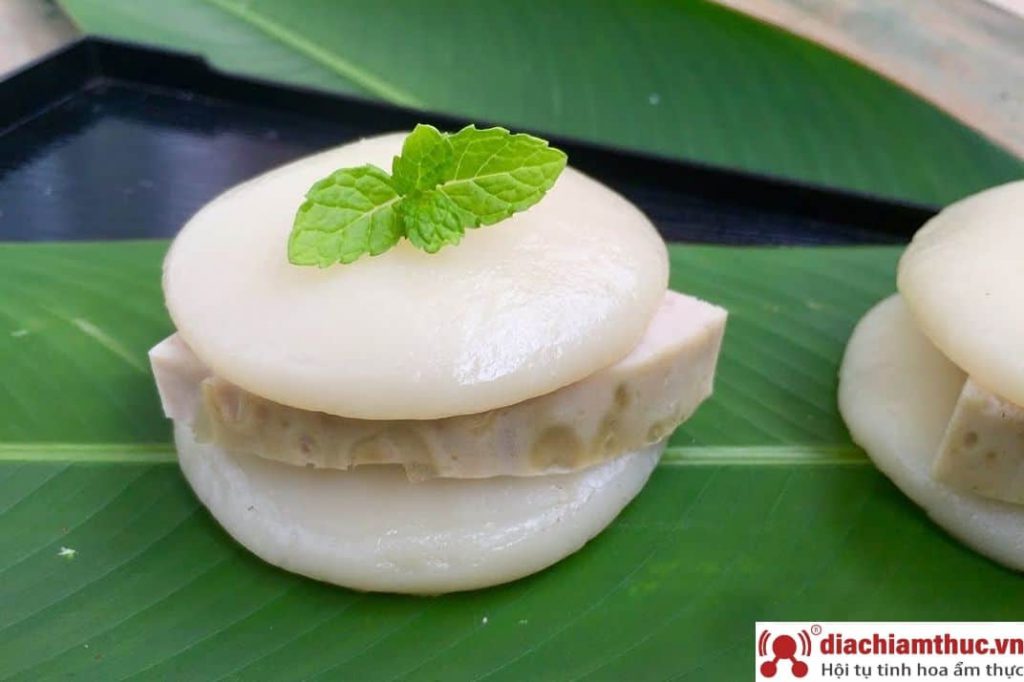Banh day is one of the traditional cakes of our Vietnamese people. Surely everyone will remember the story “Banh chung and banh day” was so famous in Vietnamese folk tales. In the ancient land of Vi Duong village, people still tell each other about the traditional way of making banh day that has made the brand name of this region. Vi Duong rice cake has become an indispensable item in worshiping in traditional festivals, on death anniversary, ancestor worship and in family and village affairs.

Vi Duong thick cake
DUONG TYPE OF DAY CAKE
When enjoying Vi Duong thick cake, diners will feel the toughness of the crust. The crust is flexible because it is made by artisans from glutinous rice flour. The sweet filling inside is made from green beans, sugar and grated coconut. It’s about sweet rice cake, if you enjoy salty banh day, you will feel the characteristic nutty flavor of green beans. Mix with a little fat, ground pepper. Vegetarian thick rice cake has only glutinous rice flour on the outside. Only thick cakes but also diverse types to meet the needs of users.

Taste of Vi Duong thick cake
The cake has a characteristic white color, cleverly molded into a round, supple shape and an irresistible aroma. The cake is wrapped in cool green banana leaves that have been cut in a circle to fit the cake. Vi Duong rice cake is also visited by tourists from far and near to order in large quantities. To serve food and beverage outlets everywhere such as conferences, weddings. When Tet comes to spring, the thick cakes are solemnly placed on the altar filled with incense. This is also a cultural beauty of our homeland that has been preserved for many generations…
- Suggested place to buy: Co My cake shop
- Address: Van Mieu Market, City. Nam Dinh
- Reference price: 5000 VND/piece
Source: Collected internet.
The streets paint the lives of Vietnamese people. The streets here are not just for traveling. Streets and sidewalks are also places to shop, eat, meet for a cup of coffee, get a haircut or rest. Big cities are always full of life with the roar of millions of motorbikes, where you can feel a constant source of energy bubbling on every street.
Vietnam's terrain has about 40% mountains and forests, 40% hills and coverage of about 75% of the country's area. There are mountain ranges and plateaus such as Hoang Lien Son range, Son La plateau in the north, Bach Ma range and plateaus following the Truong Son range in the south. Network of rivers and lakes in the delta or mountainous areas of the North and Central Highlands. The delta accounts for about 1/4 of the area, including deltas such as the Red River Delta, Mekong River Delta and the Central Coastal Plains, which are densely populated areas. Cultivated land accounts for 17% of Vietnam's total land area.
Vietnam is located in the Indomalaya ecological region. According to the 2005 National Environmental Status Report, Vietnam is among the 25 countries with high levels of biodiversity, ranked 16th worldwide in terms of biodiversity and is home to about 16% of the world's biodiversity. species in the world. 15,986 plant species have been found throughout the country, of which 10% are endemic. Vietnam has 307 species of nematodes, 200 species of oligochaeta, 145 species of acarina, 113 species of springtails, 7,750 species of insects, 260 species of reptiles. , 120 species of amphibians, 840 species of birds and 310 species of mammals, of which 100 species of birds and 78 species of mammals are endemic. There are also 1,438 species of freshwater algae, accounting for 9.6% of the total number of algae species, as well as 794 species of aquatic invertebrates and 2,458 species of marine fish. In the late 1980s, a population of Javan Rhinos was discovered in Cat Tien National Park and it is possible that the last individual of this species in Vietnam died in 2010.
Vietnam's costumes are very diverse and rich, but the ones that impress people the most are the ao dai and the four-piece dress. The outfit carries the look and soul of Vietnam and when it comes to it, people will immediately think of Vietnam and that is the traditional ao dai. Traditional ao dai consists of a long shirt split into two front and back flaps, floor-length pants, material is silk or plain fabric, diverse colors and patterns.